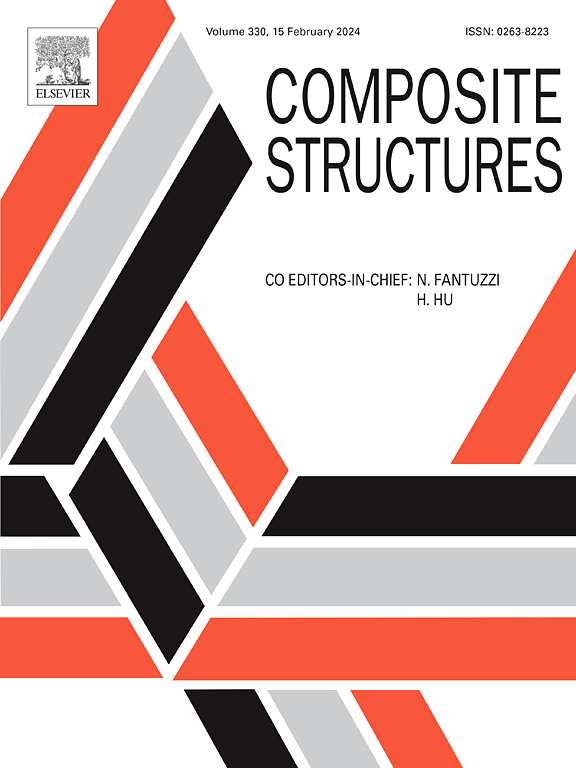Investigation of the evolution and movement of volatile bubbles in the process of curing polyimide composites by in-situ observation
IF 6.3
2区 材料科学
Q1 MATERIALS SCIENCE, COMPOSITES
引用次数: 0
Abstract
Polyimide composites offer the unique characteristics of excellent thermal resistance required for aerospace structures. However, in the process of curing polyimide composites, large amounts of volatiles are generated, which cause many voids in the cured composites. Understanding the mechanism of bubble evolution and movement caused by volatiles during composite curing processing is important for removing voids. This research developed an experimental platform for in-situ observation and investigated the complicated bubble evolution process (nucleation, growth, coalescence, and rupture) in polyimide resin and composites under both atmosphere and vacuum conditions. It revealed that the evolution and movement of bubbles mainly happened in narrow channels between fibers, and bubbles moved outward violently along fiber direction under vacuum condition, even causing fiber buckling. Based on the experiments, a new idea of introducing additional flow channels into polyimide composites was proposed, which greatly facilitated the removal of volatile bubbles and reduced voids in cured composites.
用原位观察方法研究了聚酰亚胺复合材料固化过程中挥发性气泡的演化和运动
聚酰亚胺复合材料提供航空航天结构所需的优异耐热性的独特特性。然而,在聚酰亚胺复合材料固化过程中,会产生大量的挥发物,使固化的复合材料产生许多空隙。了解复合材料固化过程中挥发物引起的气泡演化和运动机理,对消除空隙具有重要意义。本研究搭建了现场观测实验平台,研究了常压和真空条件下聚酰亚胺树脂及其复合材料中复杂的气泡演化过程(成核、生长、聚并、破裂)。结果表明,气泡的演化和运动主要发生在纤维间的狭窄通道内,在真空条件下气泡沿纤维方向剧烈向外运动,甚至会引起纤维屈曲。在实验的基础上,提出了在聚酰亚胺复合材料中引入额外流动通道的新思路,极大地促进了固化复合材料中挥发性气泡的去除和空隙的减少。
本文章由计算机程序翻译,如有差异,请以英文原文为准。
求助全文
约1分钟内获得全文
求助全文
来源期刊

Composite Structures
工程技术-材料科学:复合
CiteScore
12.00
自引率
12.70%
发文量
1246
审稿时长
78 days
期刊介绍:
The past few decades have seen outstanding advances in the use of composite materials in structural applications. There can be little doubt that, within engineering circles, composites have revolutionised traditional design concepts and made possible an unparalleled range of new and exciting possibilities as viable materials for construction. Composite Structures, an International Journal, disseminates knowledge between users, manufacturers, designers and researchers involved in structures or structural components manufactured using composite materials.
The journal publishes papers which contribute to knowledge in the use of composite materials in engineering structures. Papers deal with design, research and development studies, experimental investigations, theoretical analysis and fabrication techniques relevant to the application of composites in load-bearing components for assemblies, ranging from individual components such as plates and shells to complete composite structures.
 求助内容:
求助内容: 应助结果提醒方式:
应助结果提醒方式:


